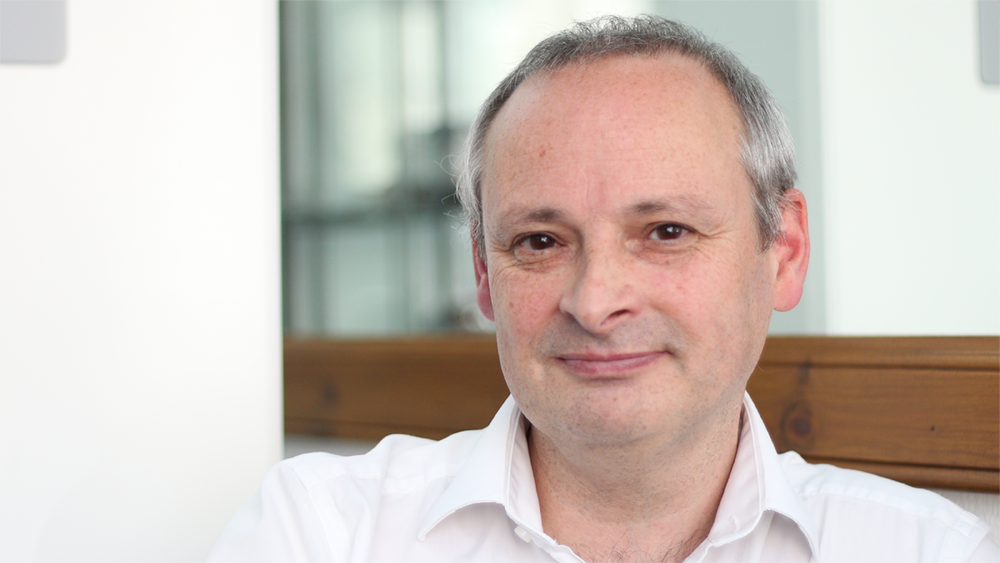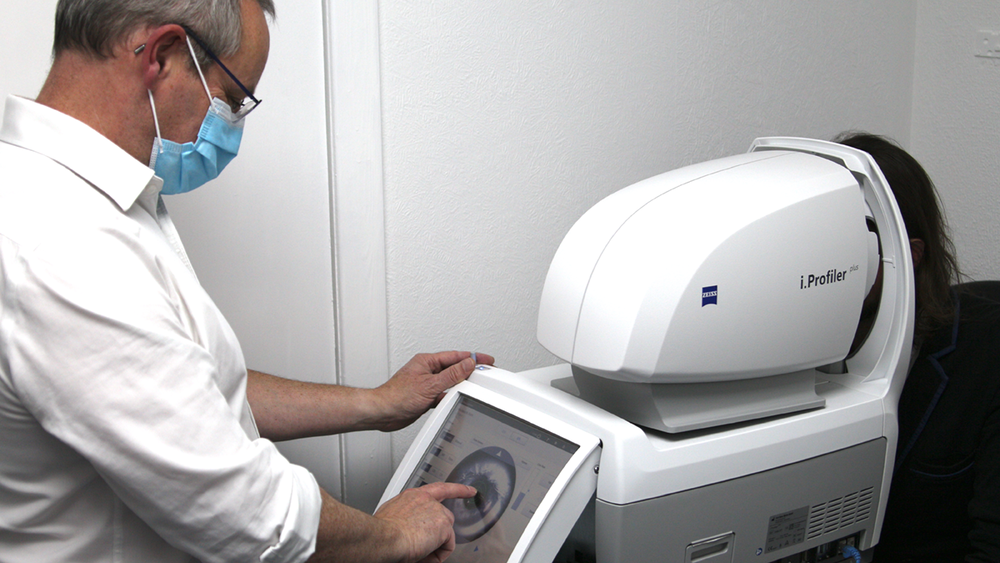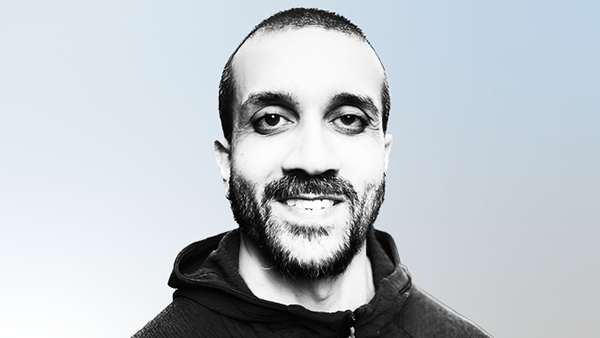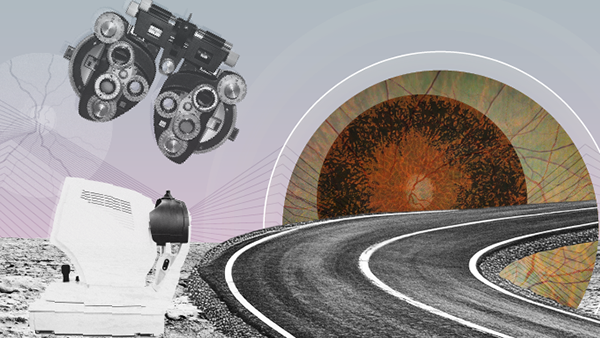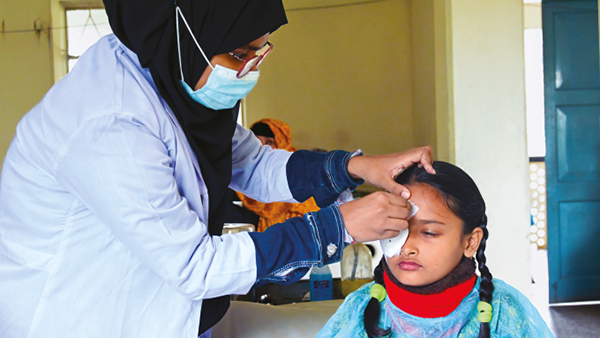You are viewing 1 of your 3 articles before login/registration is required
Defining Indispensable – Part III: The Optometrist’s Perspective
With access to sophisticated technology, optometrists can secure an increasingly prominent role in eye care. Is all lost without it? Scott McKay explores the brave new world of modern optometry.
What’s the impact of advanced technology on the practice of optometry?
Fundamentally – profoundly – technology has changed the profession. Looking back to when I qualified, there were no fundus cameras, no OCT – let alone HD-OCT with angioplex. It was a very different world. Today, we have the potential to offer so much more to patients as a profession.
But it’s not just technology that has changed. Hospitals are now asking us to accept additional responsibility in areas that they feel should be pushed out into the community – and rightly so; it’s much better for patients and it’s much better for optometrists. We no longer have to be refraction machines that identify pathology and simply refer. We are being asked to manage patients and their conditions.
And if you’ve got access to technology that allows you to analyze, to investigate – to take it up to the next level, you’re able to embrace everything that the profession has to offer. You’re also constantly learning – in a good way. New equipment drives the need for new techniques and new interpretations. Personally, I can’t now imagine sitting in a practice that simply runs a fundus camera.
In short, with the right technology and training, we are increasingly finding ourselves much more embedded in the care pathway. Personally, I’m at a point where I can identify and treat a long list of conditions (independent prescribing goes hand in hand with diagnostic capability), and that’s very fulfilling.
Presumably additional responsibility changes your relationship with technology…
Absolutely. But it’s a positive cycle – technology drives new responsibility, which is supported by new technology. If you have the technical capability to confirm your clinical insight with hard facts – and to support and evidence your approach to treatment, it takes the stress levels down quite a few notches. You’ve also got something tangible to hand over to a hospital clinic if you’re thinking about a referral – you away move from “this is what I think I’ve got” to “this is what I’ve got and here are the images.”
Indeed, if you can send across a series of scans backed up with additional insight, the consultant often doesn’t even need to see the patient. They can see exactly what’s going on – in fact, you’re probably providing them with the same information they would have generated themselves (possibly better if you’ve taken Cliff’s approach to technology adoption). In essence, you can become a remote arm of the consultant, bypassing long waits for referrals, long waits to see consults. You’ve played an integral role in accelerating the patient’s journey and reducing the burden placed on them in a really meaningful way.
So technology acts as a bridge, improving collaboration between optometrists and ophthalmologists?
Exactly – but a bridge exists only to connect two sides. In this case, both sides need to be willing and happy to embrace the collaboration that the technology enables. If you’ve got a group of consultants that will not only answer your questions but also support you and give further guidance, you suddenly end up with a warm, fuzzy relationship that benefits you, the consultant, the hospital, the health service more broadly – and, most importantly, the patient.
When you tested my eyes (see Part I), you shared a personal story about ultra-widefield retinal imaging with the Clarus 500 fundus camera…
With access to the right technology, you can see things that you wouldn’t ordinarily see and that can be very powerful – especially when you know the limitations of other techniques, whether that be standard imaging, direct ophthalmoscopy, slit lamp, or binocular indirect ophthalmoscopy.
When reviewing my 11-year-old son’s ultra-widefield images, I thought I saw a potential retinal detachment in the far periphery – so far out that I couldn’t see where the tear was but I could see the bulge where the retina had lifted. And – because of the relationship that I’d built with the vitreoretinal specialist – I was able to share the images and seek his opinion by email. He took a look and agreed with my concerns. My son was examined a few days later and a retinal detachment was confirmed. When he was in for surgery, they picked up three more small tears. The consultant’s question at the end of all this was, “Why on earth did you use an ultra-widefield retinal camera?”
My answer was simple: “I used it because it was sitting there! Why on earth would I not use it?”
Similarly, if a patient asks, “Why should I pay for the extra tests?” It’s another easy answer – they allow us to explore areas that we can’t normally see – and we do find things that do need to be treated, as my son’s case so personally demonstrates.
If you can capture a wider area, that’s fantastic; if you can dip beneath the surface – as with OCT – that’s also fantastic. The more you see, the more you know.
And how does OCT – and the CIRRUS 6000, specifically – fit into modern practice?
I think the answer to this question is best answered with just a handful of potential scenarios. Without OCT, if you have someone with suspected wet AMD, you’ve got to rely on older techniques; you might see hemorrhaging, you might not. You might see a bulge at the macular, but is there fluid there or is there not? In short, you’re left guessing. Will you make a referral or watch and wait? Well, if you’re suspicious of wet AMD, the latter is not an option. With OCT, you can see the fluid sitting there. If you use OCT-angiography, you can take that a step further by identifying the location of the leakage. If you’ve got someone with central serous retinopathy, you are able to not only see where the fluid is but also tell if the fluid is associated with an inherent leakage.
With the CIRRUS 6000, I’m also able to perform anterior segment imaging, which is a little more unusual as far as OCT is concerned. I can look at anterior chamber angles, I can measure corneal thickness, and I can look at corneal structures. When I’ve seen patients with keratoconus, I can not only see the formation of bullae in the slit lamp but also document where they sit in the stroma.
In short, each technological advance presents another important layer of information or adds a new piece to the puzzle.
The early OCT systems used to be slow and clunky beasts – and poor image quality didn’t exactly help with interpretation. But that didn’t stop them feeling like indispensable pieces of kit – once you got to grips with the technology. Fast-forward to 2022, and the progress is startling. The CIRRUS 6000 is blindingly fast, meaning that you can perform more scans in the same amount of time – and the image quality is far superior, which makes interpretation much simpler. And the vast amounts of data acquired can be crunched in numerous novel ways by increasingly sophisticated software tools. Cliff likes to use analogies – and he often references mobile phones. When they were first introduced, mobile phones were slow and clunky – but they still represented a game changer in communication. But just look at what’s in your hand today compared with the year 2000…
Today, we live in an increasingly connected world – but that doesn’t guarantee interoperability! For that reason, I consider myself lucky to be in a practice with a single technology platform. Certainly, I’ve used excellent equipment in previous roles, but because of the fragmented nature of the software behind them, using the technology could feel cumbersome. When all equipment is linked by the same system – in this case, Zeiss Forum – it’s far quicker and easier to navigate the data, and it allows a level of integration that has real clinical value. For example, being able to easily merge an ultra-widefield retinal image with and OCT scan provides a result that is more than the some of its parts – its extremely powerful. The combination also puts things into perspective for a patient – if you’re flicking between scans and photos, the patient can easily get lost or confused; with overlaid images – and the ability to fade between them – the patient can more easily grasp the anatomy and the meaning (and I suppose that can also be true for the practitioner!).
How long until optometrists are using OCT-A to monitor systemic health?
Certainly, the fact that you’re able to quickly and easily obtain images without injecting fluorescein into a patient (which comes with risks) has clear advantages. That said, OCT-A images have traditionally been interpreted in the hospital setting. Having access to the same technology in optometric practice is going to be really interesting as time moves on. It has obvious implications for monitoring diabetes amongst other things – but we’re not quite there yet as a profession or as a health service. Cliff says that OCT-A is a game changer and I agree – I think it’s only a matter of time before we start to see additional clinical needs being served by those practices with access to the technology. In the meantime, I’m delighted to have access to the technology and time to become familiar with the next wave of progress in the field before it arrives.
What would you say to optometrists who are happy with a less technologically advanced status quo?
I think that’s an easier mindset to accept if you’ve not experienced the power of modern OCT. But as optometrists, we have a duty to build on our knowledge and skills to keep up with the current state of the field. My father retired as an optometrist at the age of 72 in 2015; he had worked with Cliff for many years up until that point. Consider that Cliff invested in OCT in 2009 – when my father was around 68 – but that didn’t stop him embracing the technology and recognising a simple truth: OCT gives you peace of mind. My grandmother was also an optometrist and, if she were still alive today (and of sound mind), I would fully expect her – with some initial training – to quickly grasp the concept and its significant utility as well.
I could also put it another way: Ask your patients if they’d rather be seen by you, their local optometrist, or in a hospital clinic. I think the majority will choose their optometrist – firstly, because they feel like they receive a more personal level of care, and secondly, because they know if they’re given an appointment at a specific time, they’ll be seen at that time! Technology like HD-OCT and ultra-widefield imaging essentially allow you to keep more patients under your care rather than acting as a referral machine. And that’s good for patients – and good for your practice.
Read more in this series:
Defining Indispensable – Part I: The Patient Journey
Defining Indispensable – Part II: The Practice Owner’s Perspective
The New Optometrist Newsletter
Permission Statement
By opting-in, you agree to receive email communications from The New Optometrist. You will stay up-to-date with optometry content, news, events and sponsors information.
You can view our privacy policy here
Most Popular
Sign up to The New Optometrist Updates
Permission Statement
By opting-in, you agree to receive email communications from The New Optometrist. You will stay up-to-date with optometry content, news, events and sponsors information.
You can view our privacy policy here
Sign up to The New Optometrist Updates
Permission Statement
By opting-in, you agree to receive email communications from The New Optometrist. You will stay up-to-date with optometry content, news, events and sponsors information.
You can view our privacy policy here
